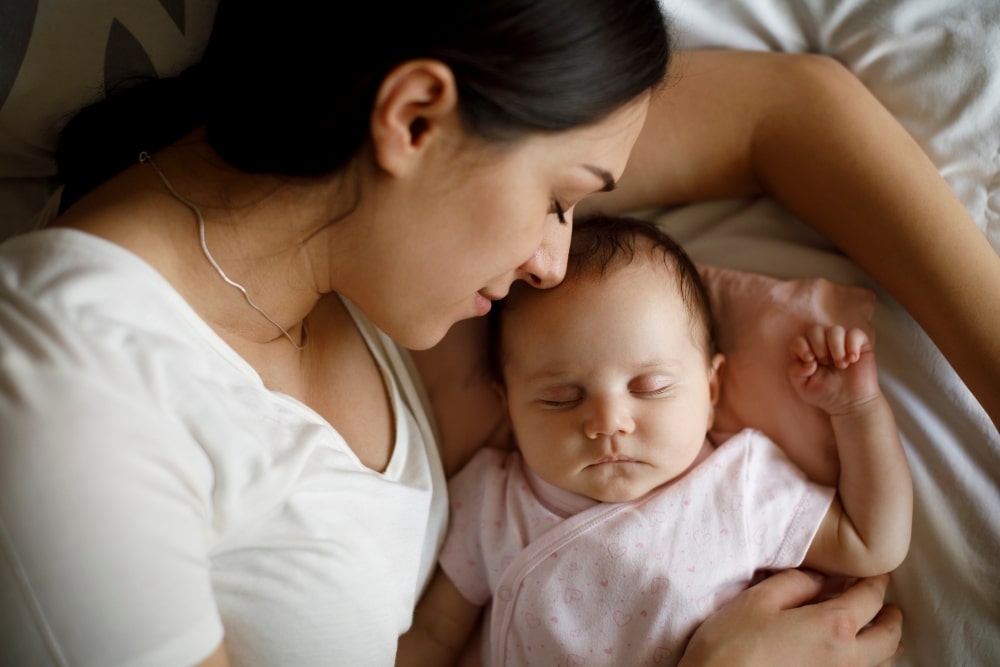When it comes to preparing for your baby’s arrival, many parents-to-be find their first big purchase is a crib. Seeing it all set up and imagining your little one fast asleep brings so much joy.
But often we don’t think further ahead to when your baby becomes a toddler and how much weight can a crib hold. We forget how fast these little ones can grow, so it is important for their safety and yours to have the right knowledge ready for when the time comes.
In this article we will be going through all the answers you need to make sure you make the right decision to safely support their important snoozing!
How Much Weight Can A Crib hold?
This will very much depend on the material that your crib is made of as they can hold different weights. But the typical weight range that a crib can hold is between 35 – 50 pounds. It is extremely rare to find a crib that can hold more than 50 pounds.
50 pounds is usually the maximum weight limit as cribs are usually designed to accommodate children 0-4 years old although there is no hard and fast rule as to when you should move your little one out of their crib.
Basic Crib Structure
Most conventional cribs nowadays are comprised of a headboard, footboard, rails, baseboard, and of course, the mattress. These will all be designed with maximum safety in mind.
The material of your mattress support will often be a tell-tale sign of your crib’s maximum weight capacity. Most cribs have a base that is made from either plywood or wooden slats similar to a full-size bed.
If your crib base is made of plywood then it is not going to hold a great deal of weight as this material is quite delicate. While if you have a crib that has wooden slats then it will be far stronger and able to take a great deal of weight.
Another factor that will determine how much weight your crib can hold is the type of wood that it is made from. Harder woods such as birch, beech, maple, oak, and ashwood will be able to support a good amount of weight.
Co-Sleeping
View in gallery
A lot of parents find they can settle their babies much quicker when they are laying alongside them. However, squeezing yourself into the crib can do more harm than good.
Although the crib can seem sturdy enough to hold your weight, this can damage the supporting baseboard, regardless of the strength of the wood.
It can also create an unsafe sleeping environment for your baby as you are taking up the vast majority of the already limited space. It is important to follow your pediatrician’s advice and practice safe sleeping guidelines to keep everyone safe.
Maximum Capacities
Many widely available cribs can last until the age of 4 in some cases. This means that the maximum weight they can hold can be up to 50 pounds before you would need to look into changing the crib out for a more grown-up option.
It is also important to know that your crib may have a height limit. If your child reaches this before the weight limit, it is important to ensure you drop the height appropriately so no sneaky escapes can happen at night.
This also means your child can stretch out comfortably without hitting any uncomfortable bars! The standard height limit tends to be 35 inches.
Crib Conversions
You may find your particular brand of the crib can convert into different stages to better fit the needs of your little one.
Initially, babies are very immobile, meaning you can keep your crib at the highest height setting and not worry about them being able to get into any dangerous situations.
At roughly the age of 4 months, your baby will start to become more mobile and show signs of building up their strength. They may roll from front to back and also have fairly good head control.
However, all babies develop at their own rate and it is important to not compare. At this stage, it may be safer to drop your crib’s baseboard to the middle setting to create a safer area for your baby to practice all that rolling and lifting!
Pretty soon after this, many babies will begin to pull themselves up alongside the crib bars. This can happen anywhere from 9-12 months but remember you know your baby best.
At this stage, your crib will be best on its lowest setting to ensure they cannot lift themselves over the top rails.
When your child reaches the stage where they have outgrown the crib, many can then convert into a toddler bed. For some this is 18 months, for others, it can be up to the age of 3.
A general sign will be when they visually seem to not fit comfortably or can climb out of the cot without any assistance.
[amalinkspro type=”showcase” asin=”B01MRZOGE9″ apilink=”https://www.amazon.com/dp/B01MRZOGE9?tag=mominformedcom-20&linkCode=osi&th=1&psc=1″ new-window=”true” addtocart=”false” nofollow=”true” sc-id=”5″ img-sizes=”500:500″ imgs=”https://m.media-amazon.com/images/I/41ymIvXvlDL._SL500_.jpg” link-imgs=”false” btn-color=”#ff9900″ btn-text=”Check Price” alignment=”aligncenter” hide-prime=”0″ hide-image=”0″ hide-price=”0″ hide-button=”0″ width=”550″]Dream On Me Charlotte[/amalinkspro]
FAQs
Can I fit in my baby’s crib?
Some parents often find their child settles easier when co-sleeping, and during what feels like your 100th time waking at night to comfort or nurse your child, it can be tempting to climb into their crib and try to regain some sleep for your own sanity.
However, a crib’s maximum weight capacity is usually not enough to support you and your baby’s weight without posing some serious risks.
This can also damage and wear the baseboard down on your crib faster meaning you won’t be able to ensure the safety of your little one long-term.
Can a baby sleep in a crib straight away?
According to the AAP, you should keep your child in the same room as you for at least the first 6 months of their life. So if you have the space for a full-size crib in your bedroom, then yes really speaking you can use your crib in the appropriate setting from birth.
Even if you do not have the room for a full-size crib there are mini cribs that may offer a better option.
However, some parents choose to use a bassinet or co-sleeper bedside crib initially for their child. These have a significantly lower weight limit and are often outgrown by the age of 4-6 months.
[amalinkspro type=”showcase” asin=”B08R3J3QZG” apilink=”https://www.amazon.com/dp/B08R3J3QZG?tag=mominformedcom-20&linkCode=osi&th=1&psc=1″ new-window=”true” addtocart=”false” nofollow=”true” sc-id=”5″ img-sizes=”500:500″ imgs=”https://m.media-amazon.com/images/I/41odffbMG-S._SL500_.jpg” link-imgs=”false” btn-color=”#ff9900″ btn-text=”Check Price” alignment=”aligncenter” hide-prime=”0″ hide-image=”0″ hide-price=”0″ hide-button=”0″ width=”550″]ANGELBLISS Baby Bassinet Bedside Crib with Storage Basket and Wheels[/amalinkspro]
Can a baby sleep in a playard instead of a crib?
Playards are a great way to have an easy and transportable area to keep your child safe when they play. It is important when your child is sleeping that they are on a flat and firm surface, meaning no soft bedding or pillows until they are old enough.
The base/mattresses on playards tend to not meet the same safety standards as the one you would use in a crib so it’s best to transfer your little one if they do happen to fall asleep whilst playing.
Why does my baby cry when I put them in their crib?
This is a question many new parents will find themselves frantically googling, especially during key developmental phases in their little ones’ life when they are going through big changes.
Be reassured it is normal for your baby to want to stay close to you, you are their safe place. If you do plan to co-sleep it is essential you follow all the guidelines to keep your child safe, and not be tempted to break the cribs weight limit rules.
The Final Thought
Luckily most modern cribs can convert into a more suitable toddler bed, so the height limit no longer applies as the element of climbing over the cot is not a risk. It is important at this stage to pay close attention to the weight limit set by your crib manufacturer to make sure you have plenty of time to plan your alternative choice.
If you are looking for an alternative to a crib then check out our Best alternatives to a crib.






